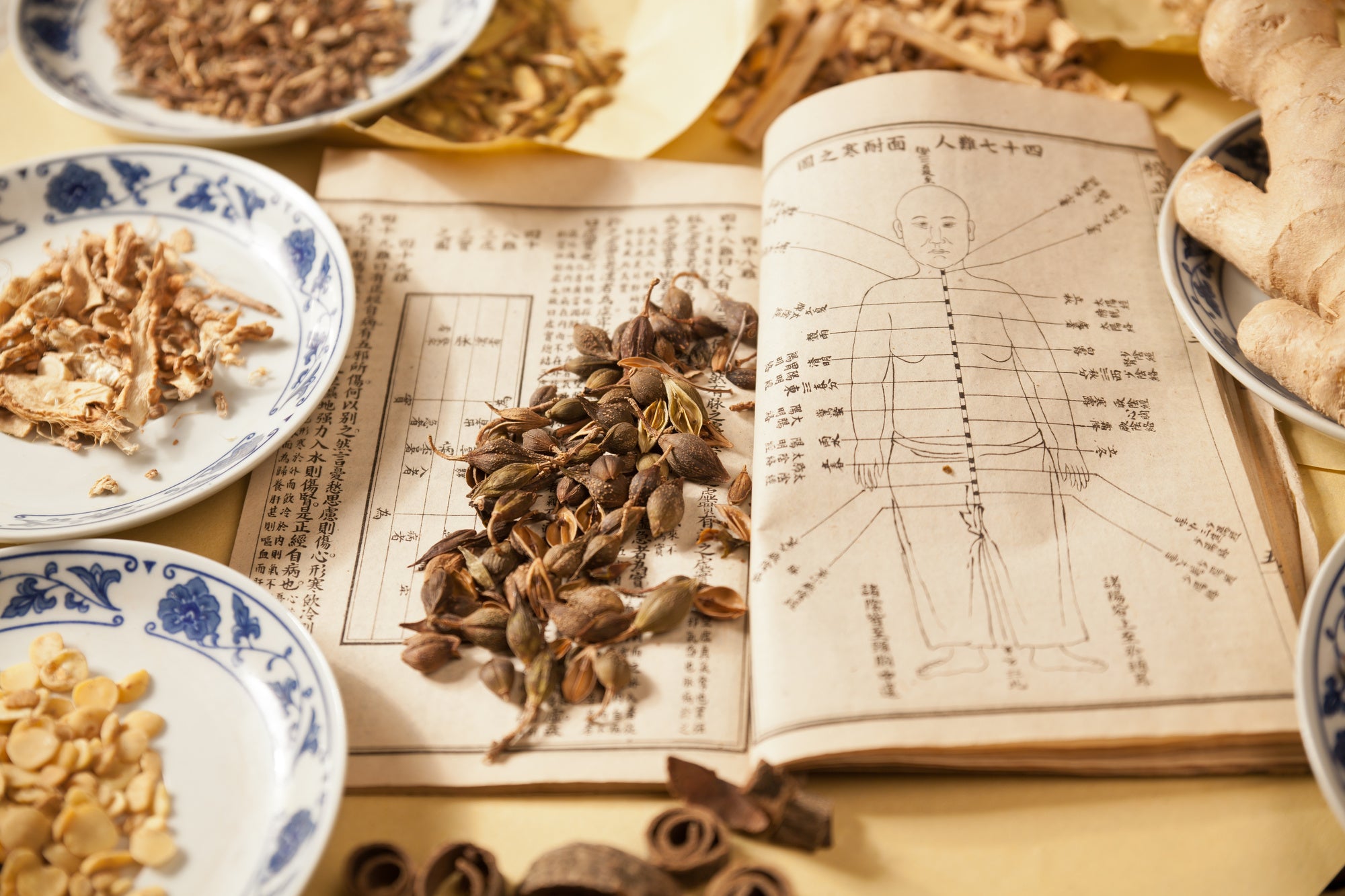For thousands of years, cultures around the world have turned to healing plants as medicines. Herbalism endured as a key component of ancient medical systems. While much traditional knowledge was sidelined by the advent of modern pharmaceuticals, herbal medicine has seen a major resurgence recently as people yearn for natural, holistic solutions to promote wellness in an overwhelming world.

From easing anxiety and inflammation to boosting immunity and calming digestive woes, medicinal herbs offer a profound path to care for your mind and body gently, safely, and efficiently. Welcome an abundance of plants into your life, and let their magic elevate your health and vitality!
How did herbal medicine emerge?
Predating mankind's synthetic concoctions by eons, herbs are believed to contain a spiritual essence and life force capable of bringing harmony.
The use of herbal medicine can be seen across diverse cultures, such as in classic Chinese herbal medicine, Ayurveda, and Native American rituals. Indigenous plants were administered as foods, smokables, teas and decoctions to treat various illnesses and conditions.
Through trial-and-error honed intuition, ancient civilizations uncovered which barks, roots, berries, flowers and fungi nurtured the body most holistically. Importantly, they understood sustainability, only gathering modest amounts and stewarding sensitive species. This prompted the age of herbalism, which relies on compounds produced by plants to protect against illness and injury, engage various bodily functions, or attract beneficial insects to stimulate healing.
These phytochemicals create physiological effects in humans that can treat or cure diseases, alleviate symptoms, enhance general health and vitality, provide preventative care, or support other therapies.
Modern herbal medicine, known as botanical medicine or phytomedicine, follows the principle of using plant parts such as leaves, flowers, stems, berries, bark or roots for medicinal purposes.
According to recent studies, 10% of vascular plants are medicinal. With between 350,000 and 500,000 species of these plants available, it's safe to say that there are more than 35,000 global species that have medical uses. Yet, modern medicine may only have scratched the surface of nature's healing bounty, and there's more to uncover in the future.
Brief history of herbal medicine usage
Since before recorded history, herbs have been integral to healing across cultures. Ancient documents like China's Shen Nung Pen Tsao detailing ginseng, Egypt's Ebers Papyrus profiling 700 formulas, India's 1500 BCE Ayurvedic texts outlining turmeric's gifts, and Greek physician Hippocrates' 400 botanical treatments confirm nature's bounty supported well-being for millennia. Monasteries nurtured gardens during medieval times.
Though traditional wisdom faced scorn amid pharmacology's rise, modern medicine still owes a great debt to the natural world. It’s said that over 40% of pharmaceutical drugs originate from natural plant and animal compounds. Major medications like aspirin and artemisinin were first used in traditional herbal systems before becoming key components of modern medicine. With antibiotic resistance looming and the desire for gentle green options swelling, herbalism has reached a full-circle renaissance.
Herbal benefits and safety
It’s believed that herbal remedies effectively treat many conditions, including fever, diabetes, Irritable Bowel Syndrome (IBS), insomnia, allergies, Urinary Tract Infections (UTIs), chronic pain, anxiety, hypertension, and fungal infections, with fewer side effects than pharmaceuticals. While herbs rarely create dependency, all medications are known to carry some risks. Therefore, quality checks matter since herbs could be contaminated or can interact with other medications.
The best recommendation is starting slowly and then increasing dosage once safety is confirmed. Receiving guidance from trained herbalists could help minimize risk and maximize benefits. Above all, herbs encourage you to reconnect with nature's healing gifts and our innate capacity for nourishment.
Getting started with herbal remedies
Follow this beginner's guide to discover practical ways to integrate herbal remedies into your routines:
Step 1: Start building herbal knowledge
When hearing terms like 'adaptogens' or 'nervines,' you may wonder, 'Just what do some dried leaves and petals have to do with my health?' Making herbs less intimidating involves grasping how they promote well-being. These whole foods contain hundreds of protective molecules our bodies readily recognize and utilize. You don't need a science background; you simply need an openness to connect viscerally through learning fun herbal tidbits.
Quality introductory books, reputable websites, online courses, community classes, local herb walks and workshops can all expand your working knowledge. Focus first on culinary additions like ginger, garlic, cinnamon and turmeric to enhance recipes with health punch. Master beloved soothing teas from chamomile to mint before graduating to stranger varieties like linden or holy basil. Jot down five new nuggets weekly. In time, your herbal insight will grow steadily.
Some key lessons for new herbal students include:
- Herbs that relieve anxiety, insomnia, depression, and stress are called nervines.
Examples: chamomile, lavender, lemon balm
- Herbs that reduce inflammation are called anti-inflammatory.
Examples: turmeric, devil's claw, white willow bark
- Herbs that strengthen immunity are called immunomodulators.
Examples: astragalus, echinacea, elderberry
- Herbs that aid digestion are called carminatives.
Examples: ginger, fennel, peppermint
Step 2: Stock your home herbal medicine cabinet
Now, you'll want to procure some starter herbs to put insights into action. The following shortlist comprises safe, common herbs for beginners to keep stocked for various uses.
- Ginger – For nausea, digestion, circulation, pain relief
- Turmeric – For inflammation-related issues, antioxidant
- Garlic – To boost immunity, lower blood pressure
- Chamomile – To relieve anxiety and insomnia, upset stomach
- Peppermint – For digestion, headaches, respiratory congestion
- Echinacea – To stimulate immune function and fight infections
- Elderberry – To support immunity, used for coughs, colds, flu
You can add others like cinnamon, rosemary, lavender, oregano, lemon balm, and the like, later as you expand your repertoire. Focus first on what entices you most.
Where to buy herbs
Your options include natural grocers, food co-ops, vitamin shops, apothecaries, online herbal companies, local herb farms, and ethnic grocery stores. Purchase organic non-GMO herbs when possible. Gather fresh herbs from unsprayed areas, too.
What form to buy
Dried bulk herbs used to make teas, decoctions (boiled extracts), tinctures (alcohol extracts); loose herbs encapsulated in pills, concentrated pastes or syrups; infused herbal honey, vinegar, oils or salves.
Where to store them
Keep herbs in airtight glass jars away from light, heat and moisture. Refrigerate opened bottles of liquid extracts. Most herbs maintain potency for one to two years. Date everything and use older stock first.
Step 3: Incorporate herbs into daily wellness rituals
To fully reap herbs' perks, integrate them into your lifestyle beyond just treating sickness sporadically. Demonstrating herbal medicine's immense global value, the World Health Organization reports that 60% of people worldwide rely on healing plants as part of their health regimens. Moreover, a striking 80% of developing nations depend predominantly on traditional herbal remedies as their primary means of healthcare.
Designing customized herb-enhanced self-care rituals bolsters vitality consistently so you're less prone to illness overall. Herbs awaken your senses through taste, smell and touch, anchoring your awareness in the present moment.
Wonderful wellness habits featuring therapeutic herbs include:
- Sipping hot mint, ginger or cinnamon infusions to start your day
- Taking powdered adaptogens in smoothies, lattes or chocolate elixirs
- Infusing baths with magnesium-rich Epsom salts and lavender
- Adding anti-inflammatory herbs like turmeric to meals
- Massaging botanical oil blends into skin eczema trouble spots
- Mist face with cucumber-rosewater blend to relieve tired eyes and refresh
- Mixing calming glycerites into evening beverages
- Diffusing energizing citrus-herb combos like grapefruit-rosemary
Tracking your energy, mood, stiffness, or nerve pain before and two weeks after establishing a routine offers encouragement that you're on the right track. Give your body time to benefit before making changes.
Step 4: Replace OTC medicines with herbal alternatives
The next land to stake herbs' flag is your medicine cabinet. When common health complaints crop up like colds, headaches, trouble sleeping, upset stomach, respiratory congestion, muscle aches and more, avoid reflexively popping toxic over-the-counter (OTC) pills. Instead, put your new herbal knowledge into practice.
Arm yourself with safe herbal solutions so you're ready to make teas, tinctures, smoothies, compresses, salves, steams or soaks at the first sign of imbalance. Keep your concoctions gentle and free from overwhelming intensity or too many ingredients. Trust the plants' wisdom.
Some entry-level herbal remedies for beginners include:
- Chamomile-passionflower tea for insomnia
- Peppermint capsules for digestion
- Anti-inflammatory turmeric paste for sore joints
- Garlic-echinacea syrup at cold onset
- Lavender-plantain salve for minor cuts, stings, burns
- Thyme steam inhalation for bronchitis
Noting the effects of your do-it-yourself remedies teaches you even more about herbs' personality! Maintain reasonable expectations, though, since herbs take consistent usage over weeks to transform health disorders significantly. Patience pays off.
Step 5: Establish a herbalist support system
While gifts overflow on an independent herbalism path, consider establishing occasional guidance from a professional. Connecting with an experienced clinical herbalist, traditional Chinese medicine practitioner, Ayurvedic clinician, or naturopath for assessment and consultation every season keeps you safely expanding your herb skills.
Describe health goals like easing digestive issues, stabilizing blood sugar, supporting adrenals, reducing inflammation, improving energy, addressing pain, boosting immunity or mental health during visits. Herbalists identify issues through detailed questioning, pulse/tongue assessment, or muscle testing and then suggest personalized formulas and doses. Unlike doctors, skilled herbalists treat root imbalance causes, not just symptoms. They know hundreds of plant allies to introduce you to.
Getting custom herb and lifestyle protocols to target your health priorities fosters measurable progress. Herbalists also ensure no contraindicated herb-drug interactions exist if you take pharmaceuticals. Though herbs are generally safe, expert input prevents rare yet serious complications. They can supply quality preparations, saving you effort, too. This plant-rich path becomes much more fruitful with occasional collaborative guidance.
Bottom line
Embracing herbalism awakens your innate connection to nature's healing wisdom. When you welcome plants as allies, gently nourishing your mind, body and spirit, vibrant well-being unfolds. Start slowly yet confidently by educating yourself, stocking staples, integrating daily herbal rituals and replacing medicines with traditional alternatives to ease common ailments.
While this independent path empowers self-care capabilities enormously, consider occasionally consulting professional herbalists to receive guidance tailored to your constitution and health goals. Soon, these green friends will feel like treasured lifelong companions supporting you through life's journey with their benevolent medicine. If you care for the plants, they will care for you, as they've done for humans since the beginning of time.






